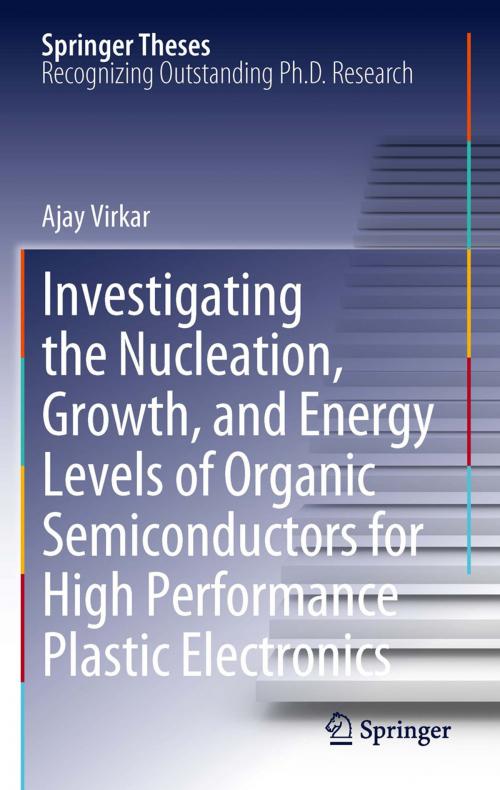Investigating the Nucleation, Growth, and Energy Levels of Organic Semiconductors for High Performance Plastic Electronics
Nonfiction, Science & Nature, Technology, Electronics, Semiconductors, Engineering, Chemical & Biochemical| Author: | Ajay Virkar | ISBN: | 9781441997043 |
| Publisher: | Springer New York | Publication: | September 30, 2011 |
| Imprint: | Springer | Language: | English |
| Author: | Ajay Virkar |
| ISBN: | 9781441997043 |
| Publisher: | Springer New York |
| Publication: | September 30, 2011 |
| Imprint: | Springer |
| Language: | English |
This thesis details the significant progress made in improving the performance of organic transistors and the network conductivity of carbon nanotubes. The first section investigates organic semiconductor nucleation and growth on the most common dielectric surface used to fabricate organic thin film transistors. The nucleation and growth of the semiconductor was determined to be a critical factor affecting the device performance. Excellent dielectric modification layers, which promote desirable semiconductor growth leading to high conductivity were identified, and a technologically relevant deposition technique was developed to fabricate high quality dielectric modification layers over large areas. This may represent an important step towards the realization of large area organic circuity. In the final section, lessons learned from studying organic semiconductor nucleation and growth were utilized to improve the conductivity of carbon nanotube networks. Selective nucleation of materials at the junctions between nanotubes in the network significantly decreased the network's sheet resistance. The resulting networks may be promising candidates for transparent electrodes with a variety of optoelectronic applications.
This thesis details the significant progress made in improving the performance of organic transistors and the network conductivity of carbon nanotubes. The first section investigates organic semiconductor nucleation and growth on the most common dielectric surface used to fabricate organic thin film transistors. The nucleation and growth of the semiconductor was determined to be a critical factor affecting the device performance. Excellent dielectric modification layers, which promote desirable semiconductor growth leading to high conductivity were identified, and a technologically relevant deposition technique was developed to fabricate high quality dielectric modification layers over large areas. This may represent an important step towards the realization of large area organic circuity. In the final section, lessons learned from studying organic semiconductor nucleation and growth were utilized to improve the conductivity of carbon nanotube networks. Selective nucleation of materials at the junctions between nanotubes in the network significantly decreased the network's sheet resistance. The resulting networks may be promising candidates for transparent electrodes with a variety of optoelectronic applications.















